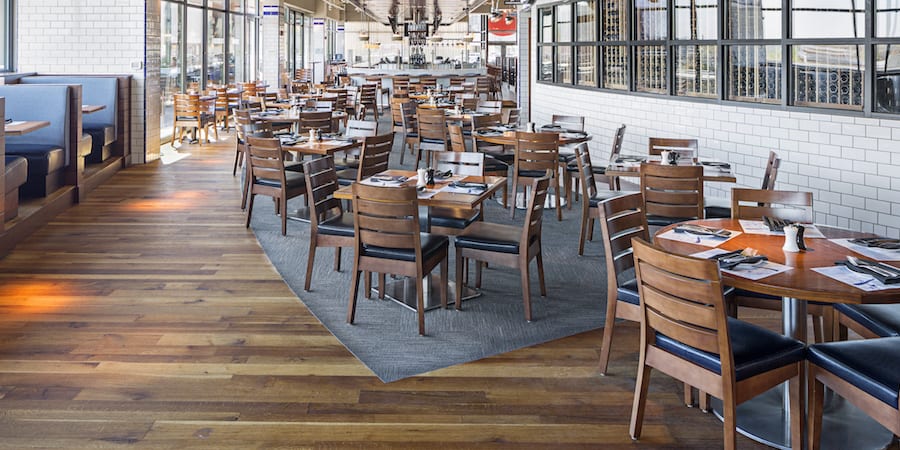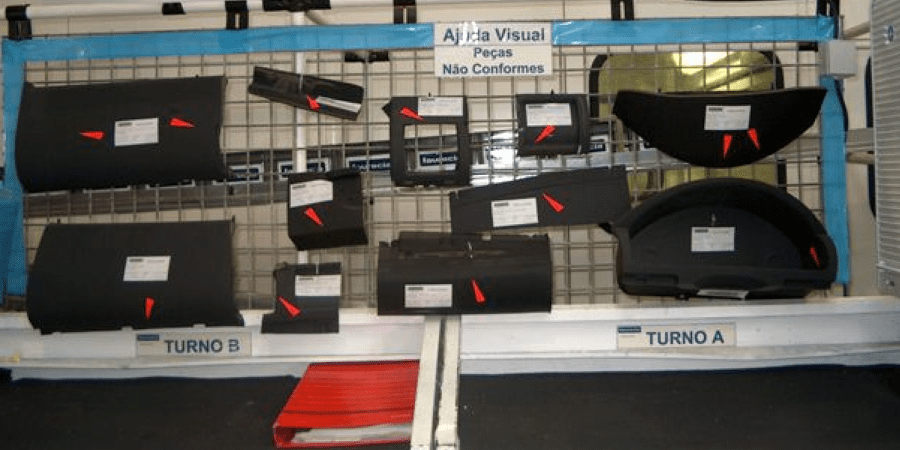
Bringing lean principles to restaurant kitchens
INTERVIEW – An American group of restaurants is experimenting with the application of lean thinking in its kitchens and dining areas. Planet Lean had a word with the chefs to see what’s cooking.
Interviewees: Richard Vellante, Executive Vice President of Restaurants and Executive Chef, and Peter Doire, Area Chef, Legal Sea Foods
Photo credit: Gustav Hoiland
Roberto Priolo: Following the application of lean at Legal Sea Foods’ fish processing plant, the organization decided to experiment with the use of the methodology in its restaurants. What was the problem you were trying to solve?
Richard Vellante: When we started, we didn’t exactly know what we didn’t know. In fact, we thought we were doing a pretty good job and it took Josh Howell of the Lean Enterprise Institute – who is supporting us in our experiments – a while to convince us that lean could work in a restaurant.
The first idea we really took on was introducing a new position in our model restaurant: the line back. Through observation, we realized that the kitchen was not working as well as it could: the cooks on the line would often run out of ingredients, for example, and every time they left the line for any reason the process would miss a step. The result was guests waiting longer for their food.
We were looking to put a different system in place, and Josh suggested a line back, based on the principle of online/offline, to provide support for people working on the line, someone who could prevent cooks from moving away from their station by ensuring everyone has all the equipment and ingredients they need.
Peter Doire: There certainly was some initial resistance to add a position. We eventually decided to invest temporarily in hiring a line back and just observed. It took a while to figure out the exact purpose of this newly created role, and we are now busy designing the workflow of the line back with more precision, to get even more out of this position. We’re in the process of redistributing all of the work in the kitchen based on having this offline capability, so that the role of line back is not an incremental labor cost. In fact, we envision and are working towards a future where the role allows for labor costs to decrease.
RP: What sort of improvements have you been able to achieve?
RV: For example, we have begun to look into ticket times – how long it takes for food to reach guests once they have ordered. With a standard is 15 minutes we started to follow the tickets and measure, until we found that out of 150 tickets 108 were not complying with the standard.
By further analyzing the situation, we discovered that 41% of the delay was caused by the oven station, with three dishes contributing to the highest percentage of delay. We looked even closer and found that those dishes require more handling than others – for example, they have to go in and out of the oven a number of times. We decided to simplify the process as much as possible, which shortened the time needed to prepare the dish while increasing its quality – the cook is now provided with the item, partially prepared, shortly before they need it. That has reduced the delay caused by the oven from 41 to 8%! Since then, we have asked other restaurants to really look into what is slowing down the process in the kitchen, recognizing that it won’t be the oven station in every restaurant.
RP: When people think of the kitchen of a busy restaurant, they imagine pots and pans everywhere, people shouting, and in general a beehive of activity. How has the atmosphere changed since lean was introduced?
PD: It’s certainly quieter than before, and lean seems to be leveling out the score. There is a pace to our work now, even at peak times, and people are more comfortable. This is the sort of change that helps to ensure our people buy into lean, and encourages us to keep coaching them.
RP: Speaking of, how do you ensure they understand lean?
RV: Our philosophy is not to push this onto anybody. We have to show our people why lean is important and how they can be part of the solution to our problems. It’s more pull than it is push. By getting them involved and talking things through, people understand there is a purpose for everything and as their work becomes more sensible, we get even more leverage. It is a virtuous cycle, but it takes time! We need to stay focused, because we can’t just ask them to trust us because we are the boss.
RP: You mentioned there was some resistance at first – did you two also have doubts?
RV: You bet I did! But I was only providing support and trying to stay positive; it was Peter who had to work with it on a daily basis. He is the one who had to take the chance and live with the stress that came with it. He was incredibly resilient, which was critical – especially in the first stages, when we were still finding our feet.
PD: I had my doubts as well. One of my worries was that, while the lean experiment unfolded, I still had to ensure that our guests got good food and a great experience. All of a sudden, in the middle of it all, I got this “lean thing” – I would often wonder why I was given this to take care of as well. At times I even wondered whether this could ruin the restaurant. In time, as the a-ha moments came, I started to change my point of view.
RV: True, we were concerned and wondered which one should take priority – the guests or the lean work? It’s a bit of a chicken-and-egg situation. Eventually we came to the realization that running the restaurant and doing it in a lean way are actually the same thing. Lean is the work. Thinking it as two different agendas is what makes it hard.
RP: What does your future state look like?
RV: Our future goal is to have a kitchen set up in a way that provides everybody with a standard on how to do the work. We want to create an environment where people have a positive attitude and truly want to make a difference.
We also aim to pull our chefs and managers out of their positions and get them to go meet our guests and to start working with the different cooks to help them solve problems. Right now they are just inundated with work and their only objective is to get good food to the guests, but it’s important to stop and observe, otherwise improving becomes impossible.
We want to work on improvements in our kitchen every day, and we believe that a lean restaurant can be something truly impressive.
PD: Another exciting thing going forward is to see how our new kitchens and dining rooms will look like now that lean is part of the way we think. In the industry there is a tendency to make the dining room sleek and beautiful, and to stuff the kitchen in a corner of the restaurant. What we have in mind is a handshake between the two, to make the space more efficient and user-friendly for us while providing a better experience for our guests.
People often ask us if lean is about rushing us in our jobs. It isn’t. It’s actually about us being available to provide value: for cooks in the kitchen, this means concentrating on the dishes without having to worry about missing ingredients – that’s where the line back comes in – while for servers in the dining area it means they can spend more time by the tables – with a server assistant polishing silverware or glasses in the meantime.
THE INTERVIEWEES


Read more


CASE STUDY – By building Lean Thinking into its processes and culture and developing people’s capabilities, this Norwegian company serving the oil&gas sector achieved fantastic results.


FEATURE – The author discusses the impact of the Covid-19 pandemic on the companies and the needs of individuals in her town of Maun, Botswana, and wonders what role lean can play in their lives.


CASE STUDY – This project in Brazil, part of a city-wide effort to improve patient flows, led to impressive results in the waiting time to access cancer care.


THE TOOLS CORNER – This month, the author discusses how we can ensure quality problems are identified early, tackled swiftly and prevented from reoccurring.

